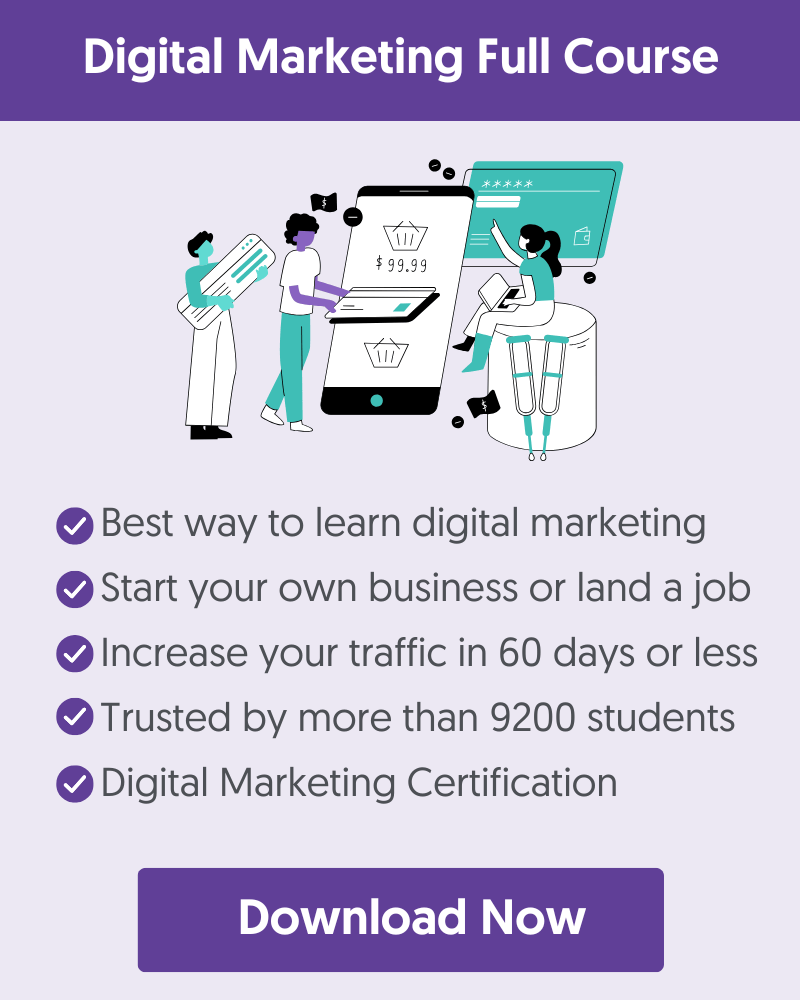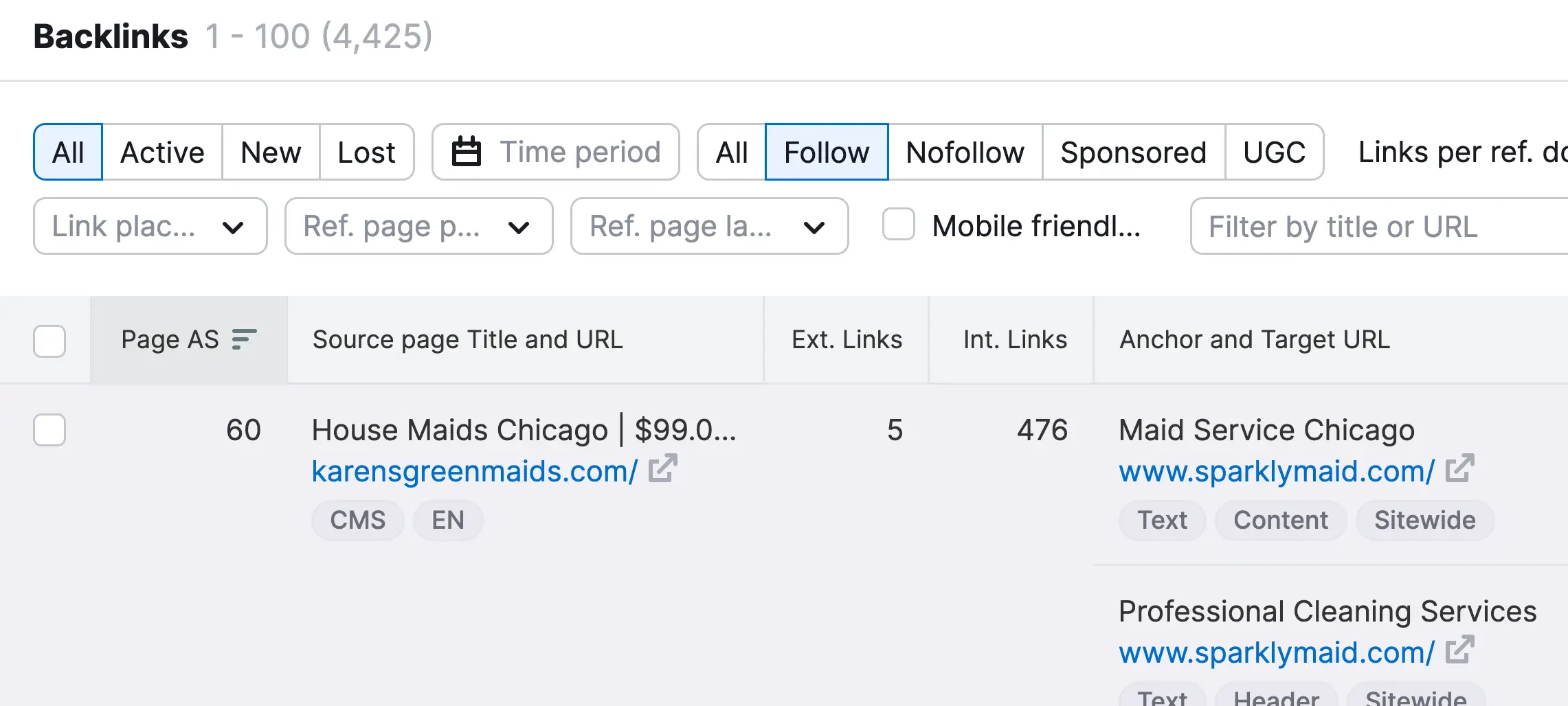- 1. Review Your Backlink Profile
- 2. Analyze Your Competitor’s Links
- 3. Get Backlinks From High Authority Websites
- 4. Earn Brand Mentions With Digital PR
- 5. Optimize Your Google Business Profile
- 6. Get Citations From Local Directories
- 7. Promote Your Website With Paid Ads
- 8. Be Active On Social Media
- 9. Partner With Influencers To Promote Your Brand
- 10. Participate In Related Forums
- Learn More About Off-Page SEO
Off-page SEO refers to techniques for promoting your website to get more links and online mentions to improve its search engine rankings.
Unlike on-page SEO, off-page SEO happens outside the boundaries of the website and focuses on building your site’s authority, credibility, and reputation.
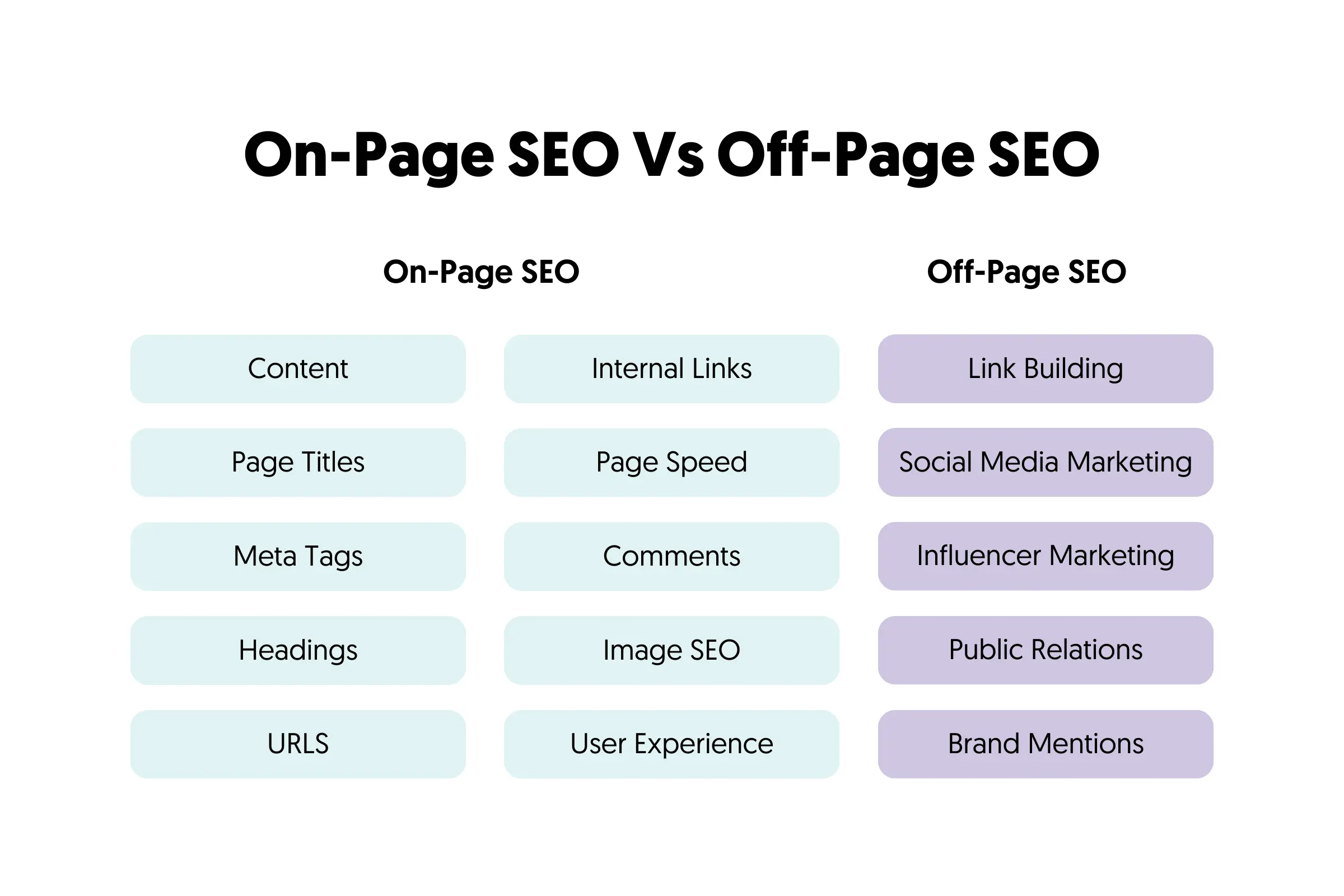
Use our off-page SEO checklist to ensure you take advantage of all available tactics to boost your website’s visibility and authority in search engine results.
1. Review Your Backlink Profile
Your first step is to audit your backlink profile.
A link profile is an SEO term that refers to all the websites that link back to your site. High-quality backlinks from other websites are important for your rankings because search engines use backlinks to determine your site’s authority and reputation.
To analyze your link profile, you'll need to use a tool like Ahrefs or Semrush. These tools record all links pointing to a website and have several features to filter links by type, relevance, anchor text, and other characteristics.
In this example, I'm using the Semrush Backlink analysis tool.
As you can see below, you can use several filters to help you analyze your profile, understand its strengths and weaknesses, and compare it with competitors.
When doing a backlink audit, you need to focus on the following:
Quality of links: Your goal is to get links from authoritative sites relevant to your industry. Links from unrelated sites are not helpful for your SEO; on the contrary, they can get you into trouble if Google finds that you're violating their link spam policy.
Domain authority: DA is a metric used by tools to determine a website's authority. Although Google does not officially use DA, having links from high domain authority websites is a signal of trust, which is good for your rankings and SEO.
Hint: To view your link by DA, click on the Page AS (the term Semrush uses for domain authority) to sort the links with the highest authority.
Anchor text distribution: Anchor text is the visible part of a link. Check your anchor text (by clicking on Anchors) to ensure a natural and varied mix of anchor texts is not overly optimized for certain keywords.
Nofollow/Follow ratio: All backlinks are 'dofollow' by default unless the nofollow tag is attached to the link. The nofollow instructs search engines not to count the particular link for ranking purposes.
In a normal scenario, websites should have both follow-and-nofollow links in their profiles. The 'Link Attributes' graph (under Overview) shows your link distribution.
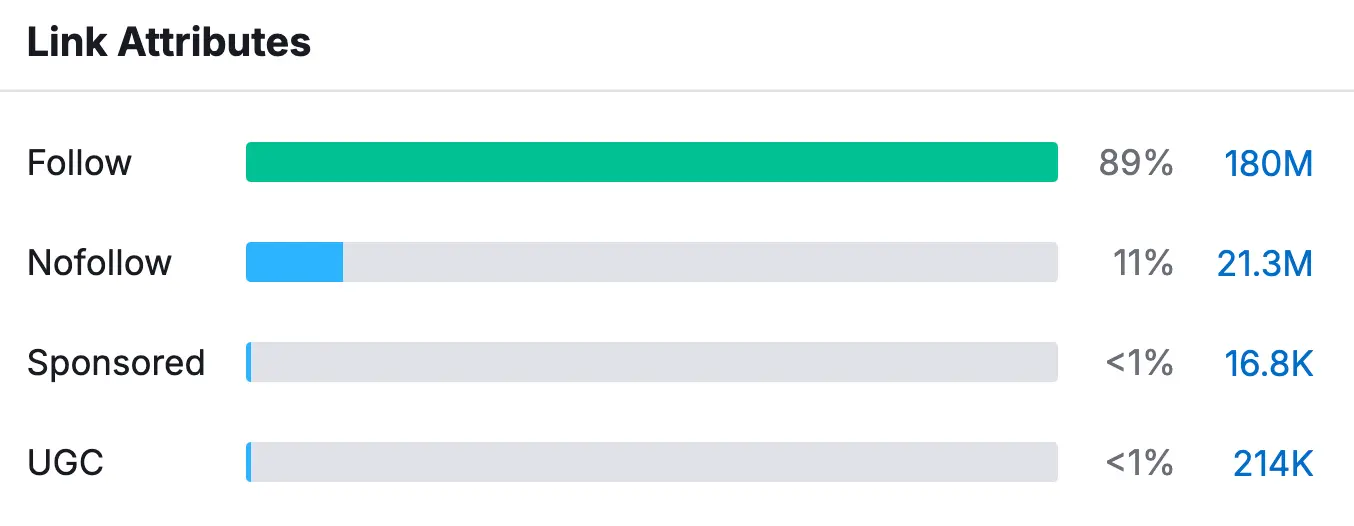
In summary, a healthy link profile has the following characteristics:
- Has a diverse range of high-quality backlinks from authoritative and relevant websites.
- It includes a mix of follow and nofollow links.
- A natural distribution of anchor texts, including the domain name and specific keywords for which you want to rank.
2. Analyze Your Competitor’s Links
After analyzing your link profile, the next step is to compare it with your main competitors to see where you stand. When two websites with good content compete for the same keywords, the one with the stronger link profile will rank higher on Google.
An SEO competitor analysis involves examining your competitors' SEO strategies to understand what works for them and how you can leverage similar tactics to improve your own rankings.
Follow these steps:
- Go to the Backlink Gap Tool (Semrush), enter your and a competitor's domains, and click the "Find Prospects" button.
- Click the "Best" tab to get a list of the best possible link opportunities for your website.
- Click the "AS" button to sort the links by domain authority.
- Examine the links to see where your competitors get their links.
- Use popular link-building techniques, such as broken link-building, outreach, and guest posting, to get as many as possible from the same (or similar) websites.
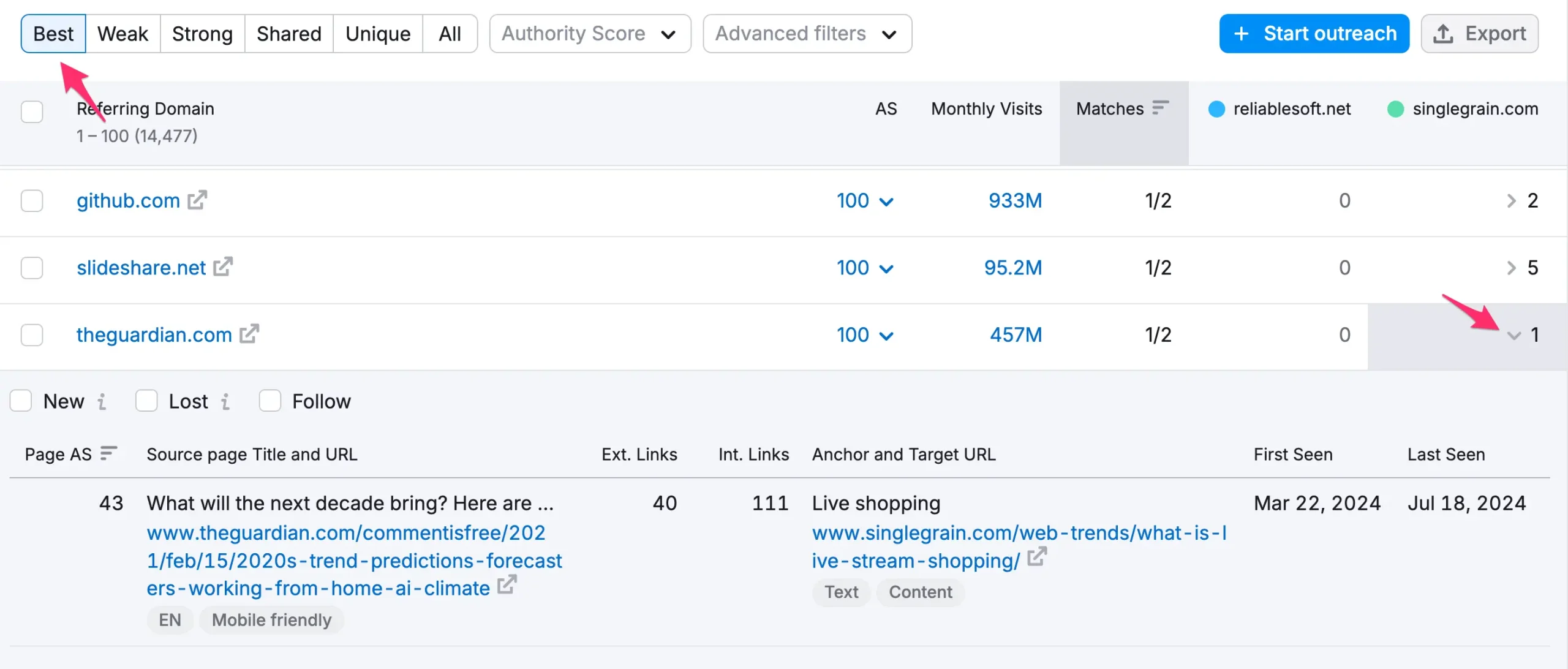
3. Get High-Quality Backlinks From Related Websites
The next step is very important for off-site SEO and involves getting links from high-quality websites that can move the needle. This is also the hardest part since valuable links are hard to get.
The most effective ways to build links are:
Guest Blogging: Write high-quality articles for authoritative websites in your niche. In return, you can include a link to your site in the author bio or within the content, driving traffic and authority.
Broken Link Building: Use tools like Ahrefs to identify broken links on related websites. Reach out to the site owner, offering your content as a replacement, and suggest they link to your site instead.
Linkable Assets: Create valuable content that others naturally want to link to, such as in-depth guides, listicles, case studies, or original research. Promote these linkable assets to relevant websites and influencers in your industry to encourage backlinks.
Resource Page Link Building: Look for resource pages in your industry that list helpful links and suggest adding your website to their list. A great place to start is companies you work with (suppliers, service providers, software vendors, etc).
Partnerships and Collaborations: Partner with businesses or influencers in your niche for collaborations that naturally lead to backlink opportunities.
For more tips, read our comprehensive guide on link-building techniques.
4. Earn Brand Mentions With Digital PR
Digital PR involves promoting your brand online through various channels, such as press releases, influencer marketing, and social media platforms. The goal is to reach your target audience to increase your brand’s visibility and credibility.
Even if brand mentions don’t include direct links, they still play a crucial role in building your site’s authority and improving your SEO. Mentions across reputable sites signal to search engines that your brand is trustworthy and relevant.
Besides digital PR, other methods for earning brand mentions include:
- Participating in Related Forums: Engage in niche-specific forums and communities (think Reddit and Facebook Groups) where you can share insights and naturally mention your brand.
- Being Interviewed on Podcasts, Websites, and YouTube Channels: Get featured in interviews where you can discuss your brand and products.
- Starting an Affiliate Program: Encourage other creators to promote your products and brand through an affiliate program, which will lead to more mentions and increased visibility.
You can get started by monitoring mentions of your brand across the web. Use tools like Google Alerts to keep track of when your brand is mentioned online.
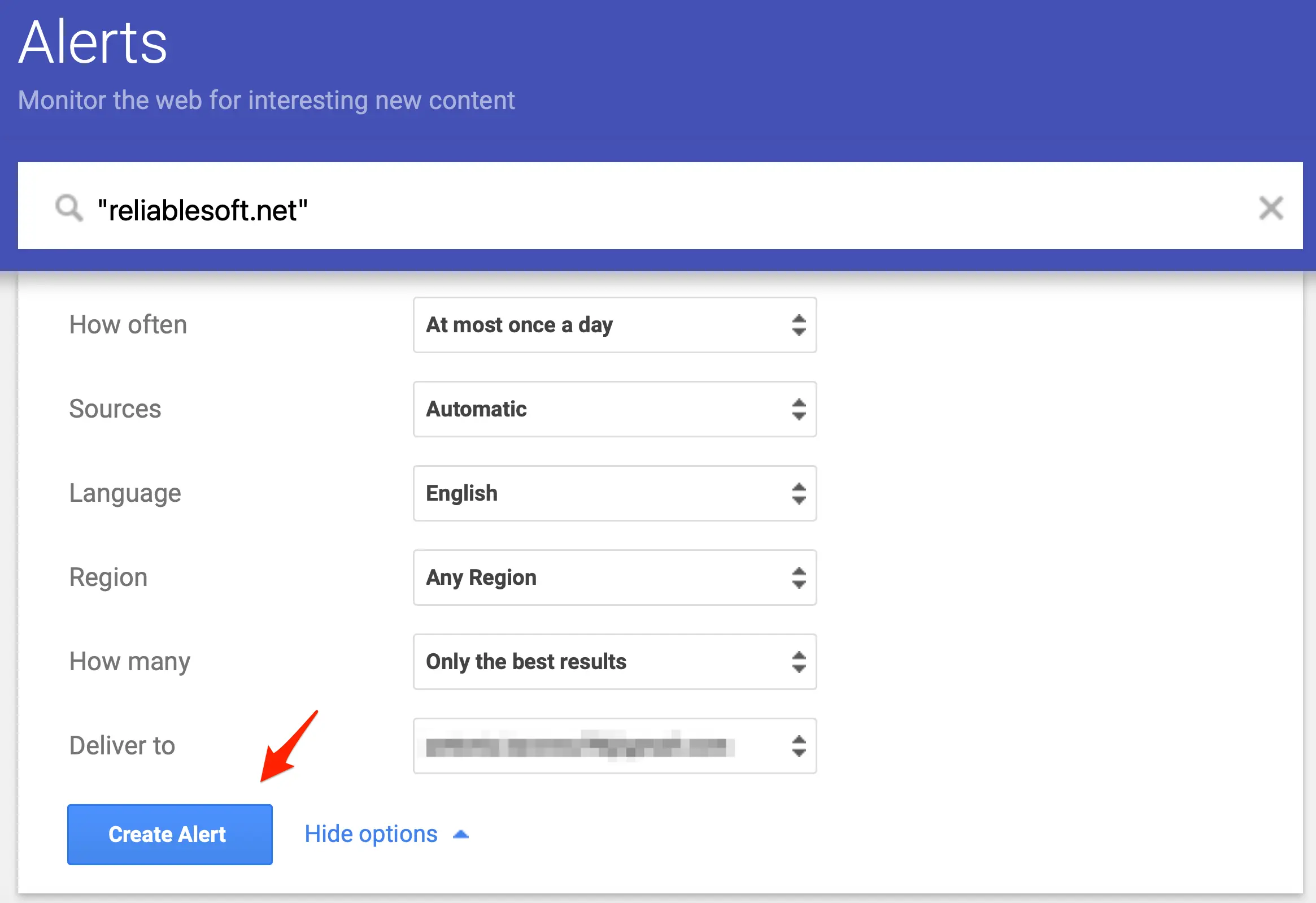
Set up an alert with your brand name, and you’ll receive notifications whenever it’s mentioned. This allows you to reach out to website owners, request a backlink if appropriate, and understand how others perceive your brand.
5. Optimize Your Google Business Profile
The next check is only applicable to local businesses. If you want to be found on Google (and Google Maps) when people in your area are searching for related services, you need to optimize your Google Business Profile.
Optimizing your Google Business Profile means ensuring it is complete and accurate to stand out in local search results.
Here are the steps to follow:
Complete All Profile Information: Fill out every profile section, including your business name, address, phone number (NAP), website, business hours, and service areas. Consistency in NAP details across all online platforms is crucial for local SEO.
Choose the Right Categories: Select the most relevant primary and secondary categories for your business. This helps Google understand what your business offers and improves your chances of appearing in relevant searches.
Write a Compelling Business Description: Include a concise yet informative business description highlighting your unique selling points. Use your target keywords, but ensure the content is natural and readable.
Add High-Quality Photos: Upload clear, professional images of your business, products, and services. Update your photos regularly to keep your profile fresh and engaging.
Encourage and Respond to Reviews: Positive reviews boost your profile’s credibility. Encourage satisfied customers to leave reviews and respond promptly to all reviews, showing that you value customer feedback.
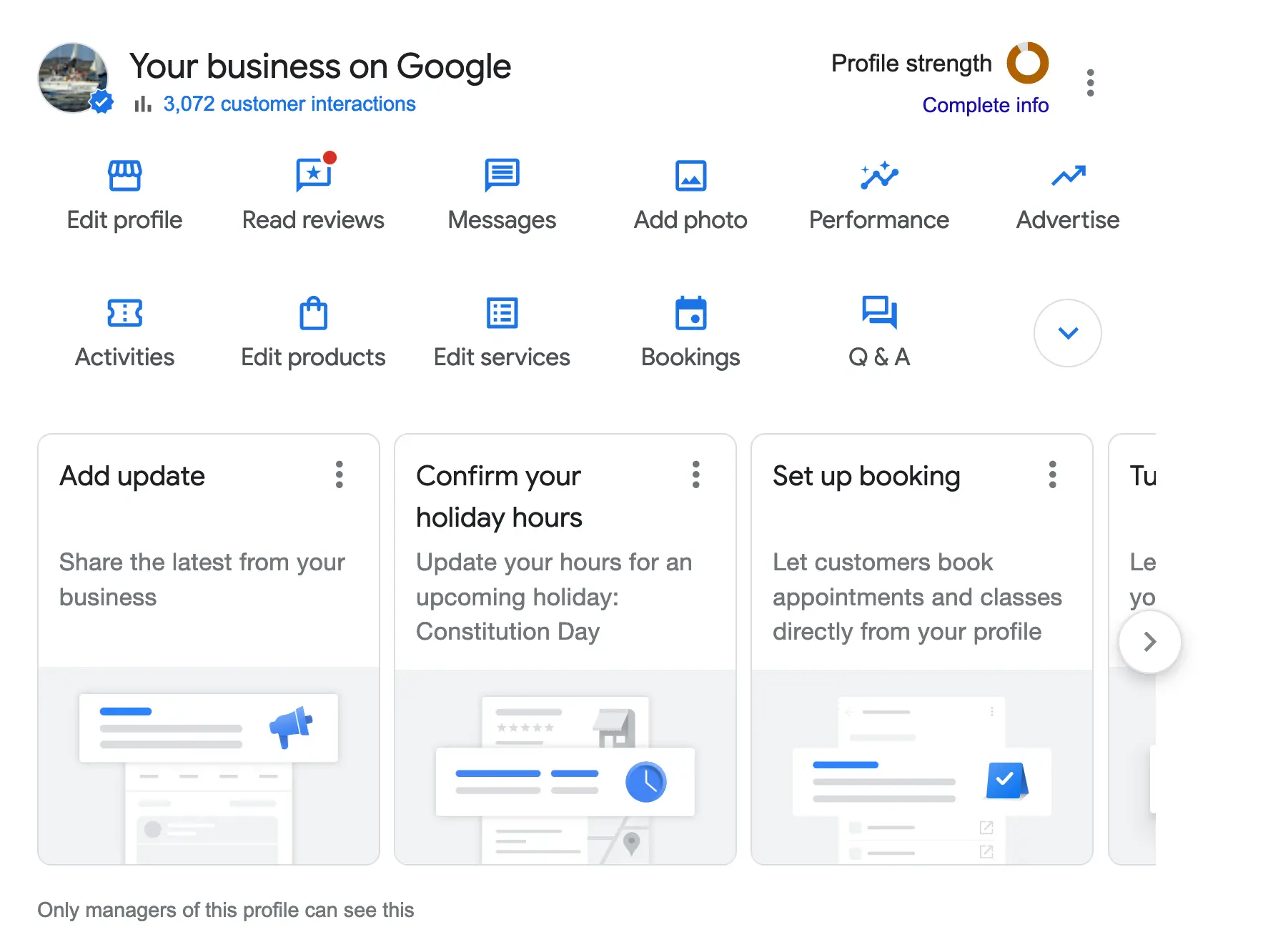
For more information on local SEO, read the following guides:
6. Get Citations From Reputable Directories
A relatively easy way to get links to your website is to get listed in reputable directories. In the past, this was over-abused, and Google had to demote websites selling links. Still, some directories and organizations are worth looking at, even if the links are nofollow.
Some of the best options are:
- Better Business Bureau (BBB): Suitable for US businesses. Being listed here can boost your credibility and trustworthiness.
- Yelp: Especially useful for local businesses, Yelp is a popular platform for customer reviews and business information.
- Bing Places: Like Google Business Profile, Bing Places allows you to manage your business listing on Bing search and maps.
- Facebook: Create a Facebook business page to increase your online presence and engage with your audience.
- Crunchbase: Ideal for startups and tech companies.
- Yellow Pages: A longstanding directory that still holds value for local businesses.
- Angie’s List: Particularly useful for service-oriented businesses, Angie’s List connects you with customers looking for trustworthy providers.
Enrich your list by searching Google for industry-specific directories where you can list your business. Also, search for your competitor's brand name on Google, see which directories they are listed, and do the same. Usually, trusted directories show up in the search results for brand-related queries.
7. Promote Your Website With Paid Ads
Paid ads are a powerful off-page SEO technique for promoting your business online. Through paid ads, you can increase sales, increase brand awareness, and also get more links to your website.
Let's see the best ways to do this:
Brand Awareness: Run display ad campaigns on platforms like Google Display Network and social media platforms like Facebook Ads and Instagram. These platforms allow you to target specific demographics and reach a wider audience, helping to establish your brand presence online.
Sales: Use search ads on Google Ads or Bing Ads, focusing on high-intent keywords related to your products or services. These platforms are ideal for driving conversions because they target users who are actively searching for what you offer. Additionally, consider running retargeting campaigns to bring back visitors who have previously interacted with your site but didn’t convert.
Links: Create linkable assets such as case studies or original research and promote them on platforms like LinkedIn and Twitter with paid ads. Target industry professionals, influencers, journalists, and bloggers who are likely to share and link to your content, helping you build high-quality backlinks.
Read also how to see your competitor's ads to get ideas on your competitor's paid strategies.
8. Be Active On Social Media
Social media is a great way to reach your target audience on the platforms where they spend most of their time.
Here’s how to effectively leverage social media:
Understand Your Target Audience: Identify where your target audience spends their time online. Are they on Facebook, Instagram, LinkedIn, or Twitter? Focus your efforts on the platforms where they are most active to maximize engagement.
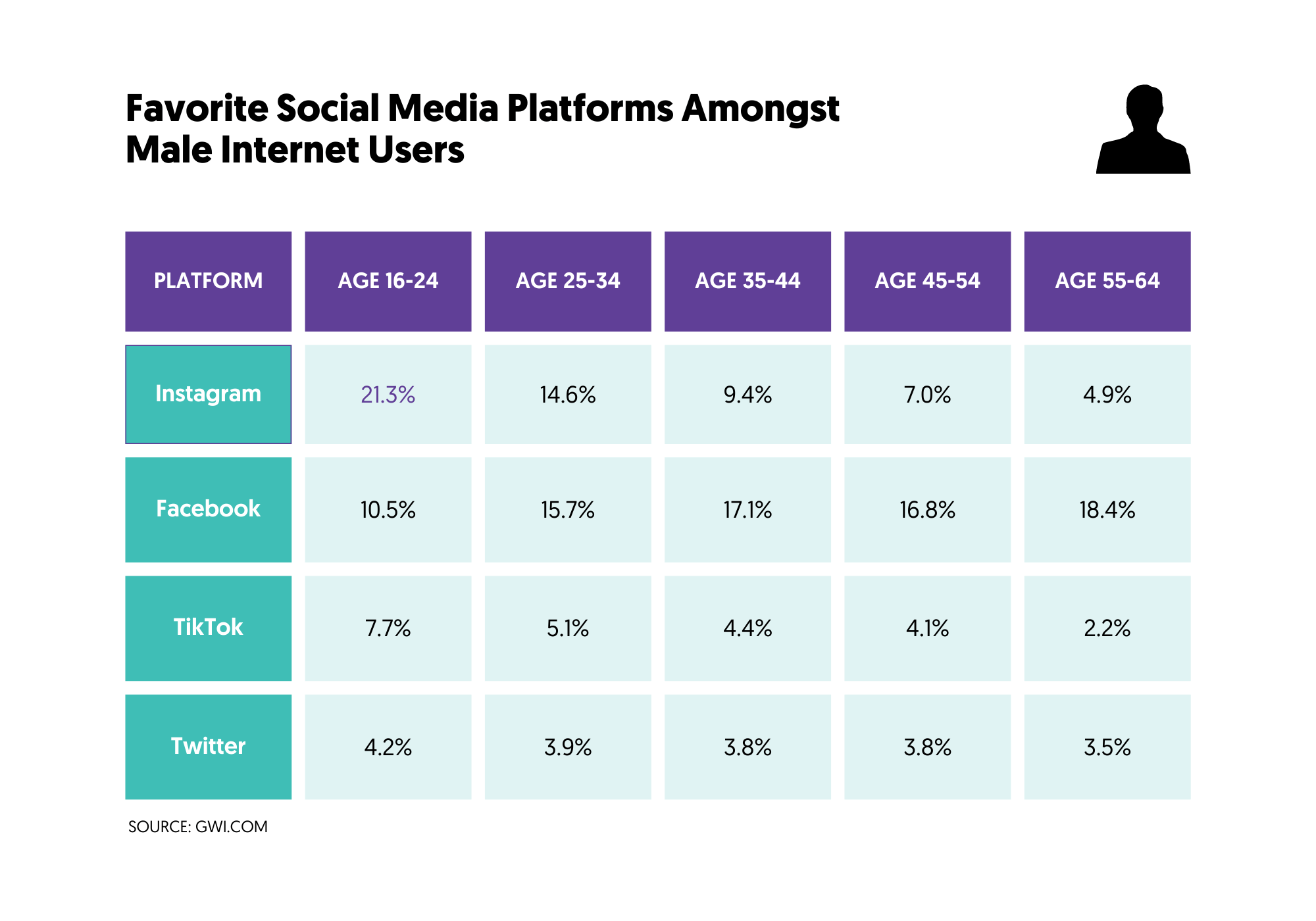
Create High-Quality Content: Share content that resonates with your audience, such as blog posts, videos, custom-made visuals, and industry news. Ensure your content is valuable, shareable, and aligned with your brand’s message.
Monitor Competitors: Monitor your competitors' social media activity. Analyze their content, engagement tactics, and interactions with their followers. Use this insight to refine your own strategy.
Engage With Your Audience: Respond to comments, messages, and mentions. Actively participating in conversations with your audience builds relationships and creates a sense of community around your brand.
Use Social Media Analytics: Regularly check the analytics provided by each platform to understand what type of content performs best and what resonates most with your audience. Use this data to optimize your strategy.
Optimize Your Content For Mobile: Don't forget that most users are on mobile while browsing their social media networks, so ensure that your content is optimized for mobile viewing and conversions.
9. Partner With Influencers To Promote Your Brand
Influencer marketing is a modern off-page SEO technique in which you collaborate with individuals with a big social media following. These influencers can help spread your brand’s message, drive traffic to your website, earn brand mentions, and generate high-quality backlinks, all of which enhance your SEO efforts.
Here are the main steps to effectively partner with influencers:
Identify Relevant Influencers: Use tools like BuzzGuru and Upfluence to find influencers whose audience aligns with your target market. Focus on those who are active in your industry and have a genuine connection with their followers.
Evaluate Their Reach and Engagement: Analyze the influencer’s follower count, engagement rate, and content quality. High engagement often indicates a loyal audience that trusts the influencer’s recommendations.
Establish a Partnership: Reach out to the selected influencers with a clear proposal. Be transparent about your goals and what you expect from the partnership, whether content creation, product reviews, or social media mentions.
Collaborate on Content: Work with the influencer to create content that promotes your brand naturally. This could include blog posts, social media shoutouts, or video reviews. Ensure the content is valuable to their audience and aligns with your brand messaging.
Track and Measure Results: Monitor the performance of your influencer campaigns using UTM parameters or unique discount codes. Assess the impact on website traffic, social media engagement, and backlinks generated from the collaboration.
10. Participate In Related Forums
Forums like Reddit and Quora have gained a lot of traction lately, and in some cases, they dominate the Google search results for many terms.
This creates a new opportunity for you to engage with your audience and promote your brand, but it's also a great way to better understand their needs.
People turn to forums to ask specific questions, which can give you ideas for new product features and for creating content for your blog.
When joining a forum, be cautious about being too promotional. This is against most forum guidelines, and you will eventually get banned.
Instead, focus on providing value by answering questions thoughtfully and sharing your expertise. Establish yourself as a knowledgeable and helpful member of the community.
Over time, this builds trust and naturally leads to opportunities to mention your products or services where relevant. Always ensure that your contributions are aligned with the forum’s rules and the interests of its members.
To find specific forums for your niche, search on Google using keywords related to your industry combined with terms like “forum” or “community.”
You can also explore forums like Reddit by searching for subreddits that match your niche.
Learn More About Off-Page SEO
Off-page SEO is one of the most challenging parts of SEO. Getting links and mentions of your brand is difficult and requires a lot of persistence and effort. But, without good off-page SEO, you won't be able to compete for popular keywords that can generate high traffic levels and conversions.
Our checklist covers the most important actions you should take, and if you want to learn more, use the following resources:
- Difference between on-page and off-page SEO.
- How many backlinks do I need to rank high on Google?
- Best Free SEO Courses (Includes courses dedicated to off-site SEO).
